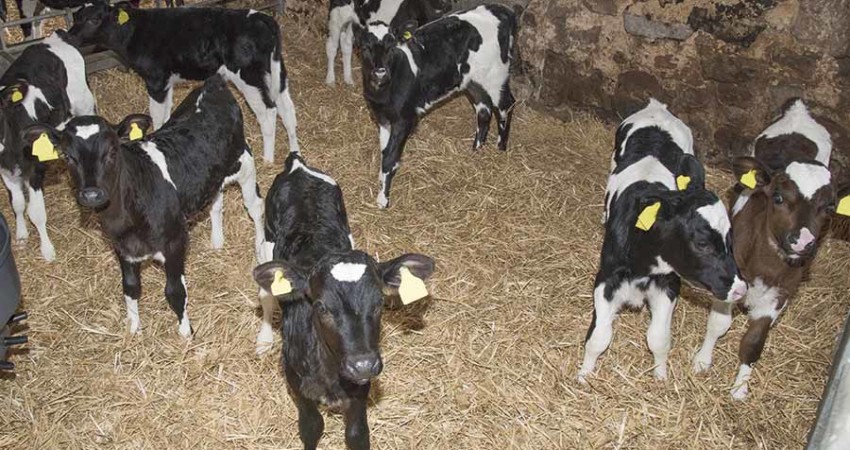

Coccidiosis can cause debilitating diarrhea in calves; it often shows up in young, stressed calves or at weaning when calves are grouped and exposed to coccidia in a contaminated environment.
This intestinal disease is caused by protozoa, picked up by the calf from the environment. Most cattle encounter coccidia and develop immunity but may continue to shed a few oocysts (egg form of protozoa) in their feces, which can contaminate feed or water.
Calves are vulnerable to this disease because they have no immunity, and if they ingest a high number of protozoa in a dirty environment, they may break out with coccidiosis.
There are many species of coccidia. Some are pathogenic and some are harmless.
“There are also different susceptibilities in individual animals to the various coccidia and some may be a little more pathogenic than others,” noted Dr. Gary Zimmerman, a veterinary researcher.
“The pathogenic species are host specific, meaning they only affect a certain type of animal. The ones that affect goats, or birds, etc., do not affect cattle. The most pathogenic species in cattle are Eimeria bovis, E.zuernii, and E. auburnensis. These are very common in all ages of cattle.”
Most cattle have subclinical infections, held in check by host immunity, but a calf that’s been exposed to one species and developed immunity won’t have immunity to the others.
Coccidia in cattle are continually shedding oocysts into the environment. Oocysts are long-lived, temperature resistant, and accumulate on the ground where they can infect cattle that are not immune to specific variety.
“If new animals are brought into the herd, they may bring new coccidia that the rest of the herd has not yet been exposed to,” warned Zimmerman.
Pathogenic process
Even though a calf may pick up oocysts soon after birth, the immature protozoa must go through several stages as they multiply within cells in the intestinal lining. Then they break out—destroying those cells in the process—to be shed in feces and contaminate the environment. This process takes at least three weeks in calves, from the time they ingest the oocysts until they show diarrhea. If a scour problem is happening in calves younger than 4 weeks, it’s not coccidiosis.
The presence of other pathogens, change in diet, inadequate colostrum for a newborn calf, etc., are all host factors that may play a role. Environmental factors could include use of barns and small pastures used year after year, crowding, poor hygiene, adverse weather, transport, frequent regrouping of calves and bringing in new animals.
Zimmerman also noted that the common producer habit of feeding hay in the same place every day concentrates cattle and can contribute to infection. Other stressors that allow clinical coccidiosis to develop include weaning, poor nutrition, and confining cattle.
If a group of calves is exposed to high oocyst contamination, they all will be infected, but there may be only a few that break with diarrhea. In some instances, morbidity—proportion of the group showing disease—may be as high as 75 percent.
“Morbidity and mortality rates are variable, depending on herd factors such as overall health as well as nutritional and immune status, and on external factors such as crowding, weather, exposure to other disease agents, and other stressors. Mortality rate in a group is usually much lower than morbidity but can be as high as 24 percent. Even if none of the animals die, the economic impact can be devastating,” says Zimmerman.
Occasionally a calf with coccidiosis will show nervous signs, which may vary from minor twitching to incoordination, loss of balance, or seizures.
“The syndrome of nervous coccidiosis is not completely understood but might be due to mineral depletion in the body resulting from the damaged and compromised intestinal tract. Nervous signs may occur in about 10 percent of calves with enteric coccidiosis, but may occur in up to 30 percent,” says Zimmerman.
Treatment for coccidiosis
There is no vaccine for coccidiosis.
“Prevention or treatment still consists of traditional products that kill or hinder the coccidia. The drugs for treatment include coccidiocidal compounds like amoprolium or sulfas that kill the organism. There are also drugs for prevention and these are called coccidiostats because they hinder the multiplication of coccidia. These include decoquinate, and the ionophores like lasolocid and monensin.
 Contact Jaguza Support
Contact Jaguza Support